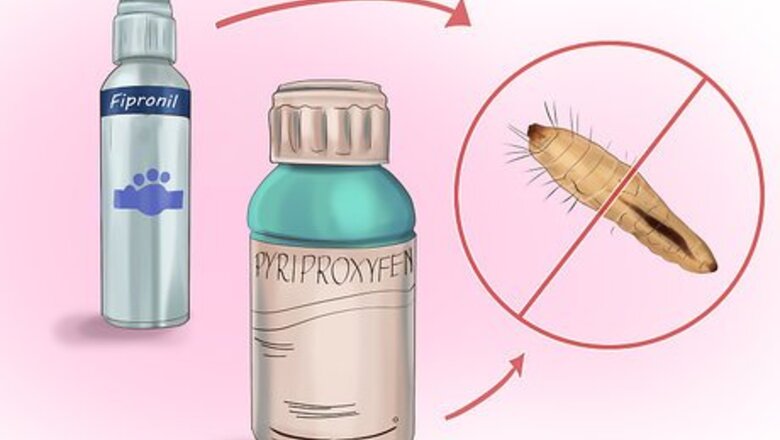
views
Using Chemical and Natural Repellent in Your Yard
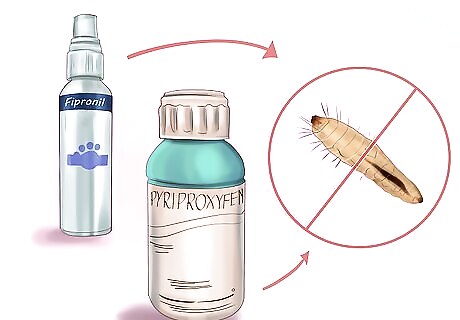
Get a pesticide made to repel ticks. You can get pesticides that repel ticks in the form of a spray or a liquid concentrate. Go for a pesticide that has a low DEET concentration, 50 percent or less, as it will be less harmful to the environment. Pesticides with low concentration DEET have still been shown to be effective at controlling and preventing ticks. Read the label for application instructions and do not apply more than directed. Look for pesticides at your local hardware store or online. Contact your local Environmental Protection Agency online or by phone to make sure you are allowed to use certain pesticides in your area, as DEET can be toxic for the environment.
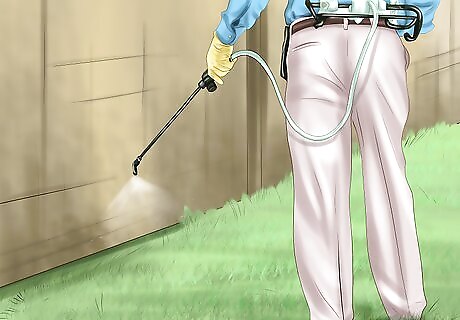
Apply the pesticide to the perimeter of your yard. Make sure you also spray it on any perennial beds that are in the shade and along any pathways close to high grass or the woods. Spray the pesticide 1-2 times a year, or as directed on the label. Try not to put pesticides on any areas close to a body of water, such as a pond or stream.
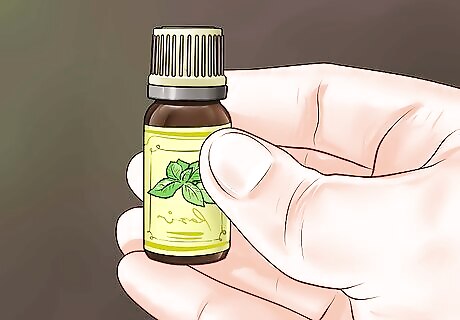
Use an essential oil spray for a natural option. Botanical pesticides are becoming more popular as they are less harmful for the environment and just as effective. Look for a spray that contains lemon eucalyptus oil, geraniol, peppermint oil, and rosemary oil. Spray it around the perimeter of your yard to keep ticks out. Look for essential oil repellent at your local health food store or online. You may need to apply the essential oil spray more frequently than a chemical pesticide, as it can fade more quickly over time. Follow the instructions on the label.

Plant American beautyberry bushes in your yard to repel ticks naturally. This plant repels ticks and other biting insects. It is a great low maintenance option, especially if you want to avoid spraying chemicals in your yard. This plant is native to the United States and grows wild along the east coast. It grows best under canopy trees and in moist soil. Buy American beautyberry bushes at your local garden center or nursery.
Doing Yard Maintenance
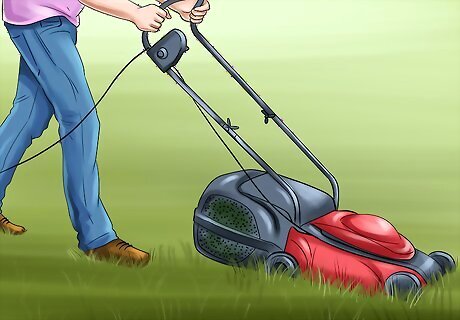
Mow your lawn regularly. Keep your grass short and well groomed so ticks cannot hide out in it. Get in the habit of mowing your lawn once a week to keep it short and manicured, especially if you have a lot of grass. Mowing your lawn will also encourage spiders and ants to hang out in your yard. These insects are natural predators for ticks, so they will eat any ticks they can find.
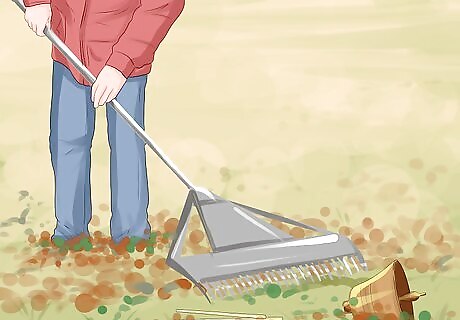
Remove wood and debris in your yard. Throw out or use any spare wood or lumber in your yard. Get rid of any trash, mattresses, old furniture, and other debris from your yard so ticks do not have anywhere to hide. Keep gardening pots and boxes stacked neatly in a garage or storage space. Do not have them all over your yard, as ticks can hide in these items.

Use cedar mulch in your yard. Cedar is a natural repellent for ticks. Make a border for your yard out of cedar mulch to keep ticks out. Place cedar mulch on any areas in your yard where your pet likes to play or lie down. You can also use cedar mulch in garden beds to prevent ticks and other insects from hiding in your plants.
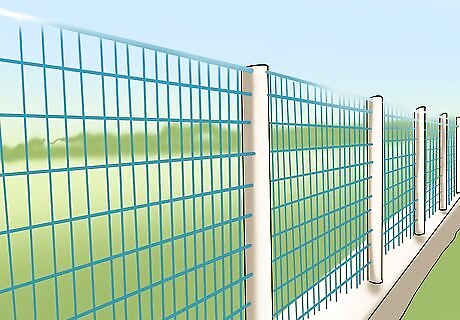
Keep wildlife out of your yard with a fence or barrier. Deers, squirrels, mice, rabbits, raccoons, and feral cats can all carry ticks. Put up a wood fence or barrier around your yard to them out. Prevent wildlife from visiting regularly by making sure there is no debris or trash in your yard. Keep berry shrubs and apple trees trimmed so they do not attract wildlife. Remove any wildlife that tries to live in your yard or under your deck so you are not exposed to ticks.
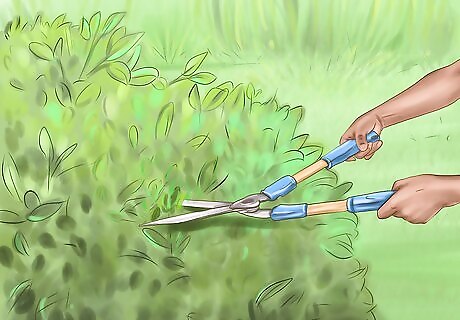
Prune trees so more sunlight gets into your yard. Ticks thrive in shady, moist areas. Keep your yard bright and dry by making sure it gets plenty of sunlight during the day. Prune trees so the branches do not block out light on your flower beds or grass. Keep your plants trimmed so they are exposed to sunlight.
Preventing Ticks on Your Body

Apply insect repellent that contains at least 20 percent DEET. You can also use repellent that contains at least 20 percent picaridin or IR3535. Apply the repellent to any exposed skin before you go outside, especially if you plan to be in areas with trees or tall grass. Look for repellent at your local camping store or online. Do not put repellent around your eyes or mouth.

Wear clothing coated with permethrin. Permethrin is a repellent that protects your clothing from ticks for several washes. Look for boots, pants, socks, and tents that contain at least 0.5% permethrin. You can buy permethrin coated clothing at your local camping store or online.
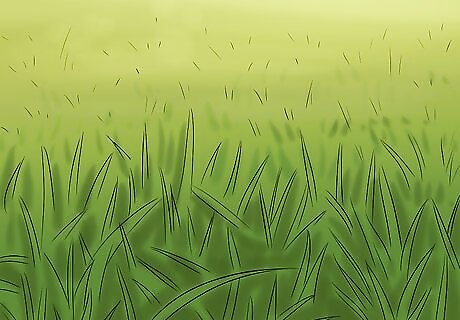
Walk in the center of trails and avoid grassy areas. Always stick to the middle of hiking or walking trails so you do not come in contact with high grass or bush. Try not to deviate off the trail into the woods or a grassy area, as this can expose you to ticks.
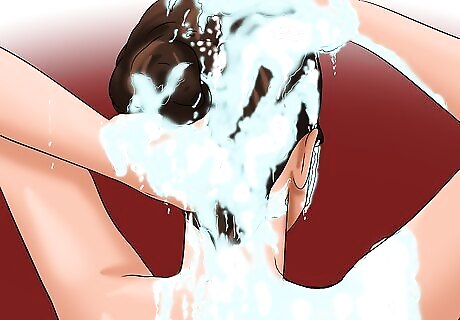
Bathe or shower as soon as you go indoors. If you have been outdoors in your yard or outside on a hiking trail, try to bathe as soon as you get inside. Remove your clothing and have a hot shower to remove any ticks on your body.
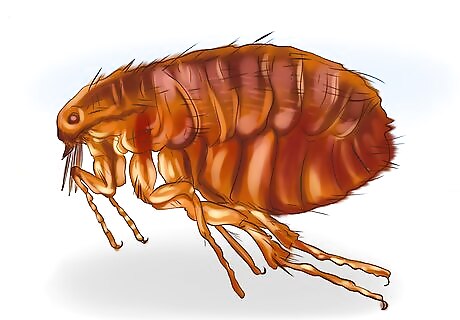
Examine your body for ticks. Use a hand-held or full-length mirror to check your entire body for ticks. Make sure you check under your arms, around and in your ears, and between your legs. You should also look inside your belly button and behind your knees for ticks. In some cases, ticks can get into your hair so make sure you check this area as well.
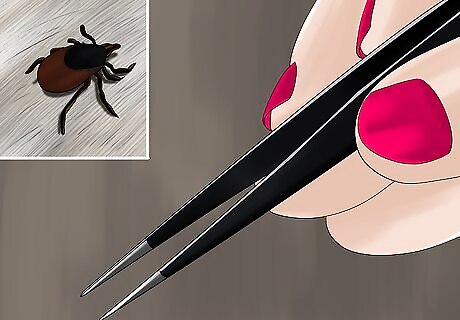
Remove ticks with tweezers. Carefully remove them one at a time with a pair of tweezers, picking them off gently. Place the tweezers as close as possible to your skin when picking off the tick. Do not twist or yank on the tick off, as this can cause it to bite you and leave its head buried in your skin. Try not to squeeze the tick too hard as you pick it off, as you do not want to crush it and expose yourself to the blood inside of it. Submerge the tick in a bowl of rubbing alcohol to kill it, then flush it down the toilet. Apply iodine to tick bites to sterilize the area. If you are struggling to remove the ticks yourself, go see your doctor so they can do it properly for you.
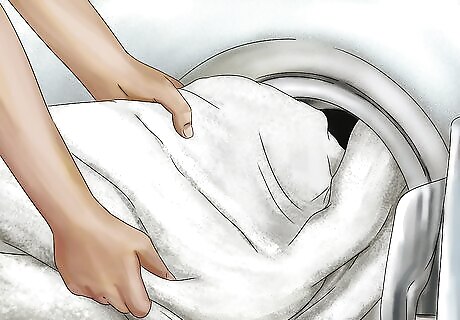
Dry your clothing in the dryer after being outdoors. Throw your clothing in the dryer and set it on high heat for 10 minutes. This will kill any ticks that may be on your clothes. If your clothing is damp or wet, set the dryer for longer so your clothing is dry and tick-free.
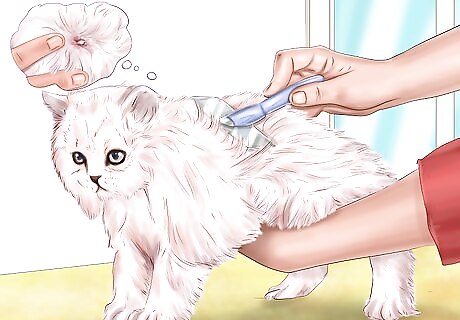
Examine your pets for ticks after they go outside. Make sure you look at your dog or cat for ticks if they have been outdoors. Part its fur to check for ticks, especially on its head, neck, and ears. If you find ticks on your pet, remove them with tweezers. Then, apply iodine to any bites your pet may have due to ticks.
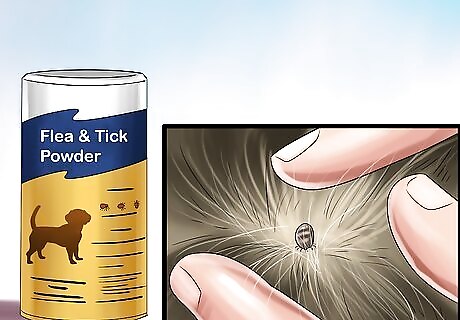
Put repellent on your pets to prevent ticks. Look for tick repellent that contains fipronil, amitraz, or permethrin. You can find tick repellent for pets as a spray or a spot treatment. Make sure you put repellent on your pet before they venture outside to prevent tick bites. Your vet may also be able to recommend a tick repellent for your pet during your regular vet visits.












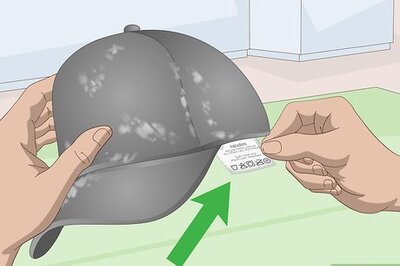







Comments
0 comment